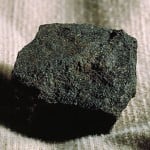
A comprehensive examination of air pollution and greenhouse gas emissions must be undertaken and completed prior to any decision being made on whether or not U.S. Northwest ports can be set up for coal export to China. This, in effect, is what Gov. John Kitzhaber of Oregon and Washington Gov. Jay Inslee expressed in a letter directed to the Council of Environmental Quality, information in the Seattle Post-Intelligencer article, “Govs to feds: Clear the air before exporting coal,” revealed.
The Seattle PI article’s author, Joel Connelly, further pointed out that the governors also in the letter asked if the U.S. should encourage the use of a fossil fuel that when ignited can pose a risk to public health, lead to the acidification of oceans and sea-level rise, and result in the more rapid melting of snow packs, etc.
The letter’s content could not be clearer.
So, what say you? Yes or no?
To me, this is a classic – a “what’s-in-our-best-interest-economically-versus-what’s-in-our-best-interest-ecologically” – debate, if you will.
Connelly made quite clear that it’s been two years since the U.S. was passed up by China as the world’s leading greenhouse gas emitter, largely because of the latter country’s dependence on coal.
But wait. There’s more.
According to Connelly also, the coal industry contends that if the United States is unwilling to provide China with export coal, then the Asian nation will simply seek purchasing coal from elsewhere.
So, what’s the answer?
Care to weigh in?
For more on the matter, see: “Govs to feds: Clear the air before exporting coal.”
– Alan Kandel
Two things stand out here – the relative low cost for and the environmental effect of the low-sulfur coal.
The Montana and Wyoming coal in question in that its cost is relatively low, apparently, when compared to other coals, to what extent is this feature a factor in this particular type of coal being selected for overseas export?
The Montana and Wyoming coal in question in that its sulfur content is relatively low and that it burns more cleanly when compared to other higher-sulfur-content fuels, to what extent is this characteristic a factor in this particular type of coal being selected for overseas export?
Important questions, no doubt.
Knowing that more environmentally safe and sustainable methods of energy production exist, perhaps the question we should be asking is: Is there a concerted effort worldwide to encourage widespread adoption and implementation of these energy production methods? If not, why not?
I don’t see what is so great about improved caobrn standards. There really is no such thing as clean or cleaner coal. Why are we happy about crumbs? It is time to move wholesale to renewable energy geothermal, solar and wind. Stop the $10 $50 billions in subsidies to dirty oil and use this $ to give tax incentives for fossil to convert. Let’s stop this deplorabe, very healthy status quo now.